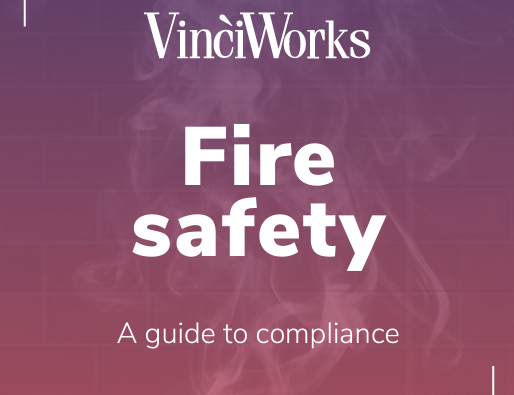Our related Courses
Making sure a workplace is fire safe is one of the most important responsibilities an employer has to their employees and the general public.
As fire safety awareness has increased and health and safety legislation has improved in this area, the amount of fire-related deaths in the workplace has steadily gone down over a thirty year period. There is still a long way to go, however, with around 22,000 workplace fires happening annually and several fatalities every year. Fire safety training plays a crucial role in continuing the positive trend towards fewer deaths and injuries, and one day possibly eliminating workplace fires altogether.
Safety First
The most crucial aspect of fire safety is how it protects people. In 2016-17, there were 17 recorded deaths from workplace fires in the UK; 11 died from fires started accidentally, six from fires that occurred on purpose. These shocking numbers illustrate how important fire safety is for employers and the terrible consequences when things go wrong.
In early August 2018, an explosion and fire at the Chemring Countermeasures military equipment facility in Salisbury killed one person and seriously injured another. As well as the tragic human cost of the incident, the firm suffered extensive financial losses. They were unable to resume production for some time due to the damage and their annual profits were expected to drop by up to £20 million.
The Chemring Countermeasures incident is an extreme example, leading to the worst possible outcome of a fire: loss of life. There are unfortunately many examples of workplace fires that have caused injuries, damage to buildings, loss of earnings and even a hazard to the people living in the surrounding areas, with nearby residents often being advised to close their windows and doors to prevent inhalation of potentially toxic fumes.

An Employer’s Responsibility
Fire safety is important to all employees and visitors to a work site and it’s reasonable to expect that everyone does their share to minimise the dangers. This includes following all fire safety procedures and recalling all fire safety training they have been given.
Legally, the responsibility for complying with fire legislation falls to the “responsible person” in an organisation. That can be the owner, employer, occupier, landlord or building manager of a site.
Failure to comply with fire safety legislation – especially after being warned that your facilities are in violation of the law – can carry stiff penalties. When the Radnor Hotel in Bayswater, London was inspected in 2015, inspectors raised several serious concerns including the lack of a working alarm system, a missing fire risk assessment, missing fire doors and emergency lighting in bad conditions. The owner, Salim Patel, did not address these concerns to the satisfaction of the authorities and was eventually taken to court by the London Fire Brigade. He was handed a fine of £200,000 and a four month suspended prison sentence for risking the lives of guests and staff with inadequate fire safety measures.
Steps to Take
Becoming fire safe doesn’t have to be particularly expensive or time-consuming for a business but making a small investment in quality fire training for staff, adequate equipment and a solid understanding of the relevant legislation can be the most important decision a company makes.
All companies must ensure they have completed a fire risk assessment, which should be revisited often. This needs to identify fire hazards, any people at higher risk, evaluations of all relevant factors and an emergency evacuation plan. This highlights any potential issues before they become a problem and can help with minimising fire risk in that particular setting. It is also a handy way of keeping track of fire safety measures already in place, such as fire extinguishers and emergency lighting, and of checking that these are still fit for purpose.
Staff must be trained in fire safety, be aware of the risk assessment and its findings and know how to safely get out of the building if a fire breaks out.
Fire safety is one of the most important aspects of health and safety in the workplace. Most workplaces, be they offices, shops, building sites, factories or laboratories, contain multiple potential fire hazards. By identifying these promptly and taking the proper steps to minimise them, you can make sure your site is safe from the devastating consequences of a workplace fire.


